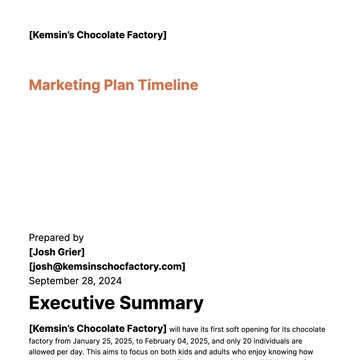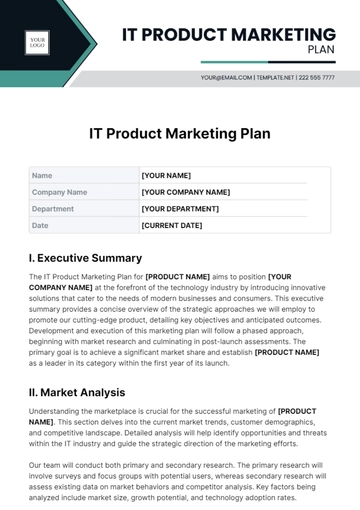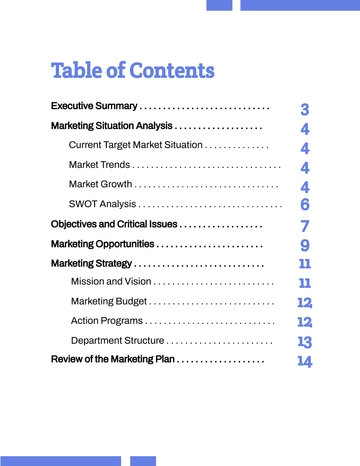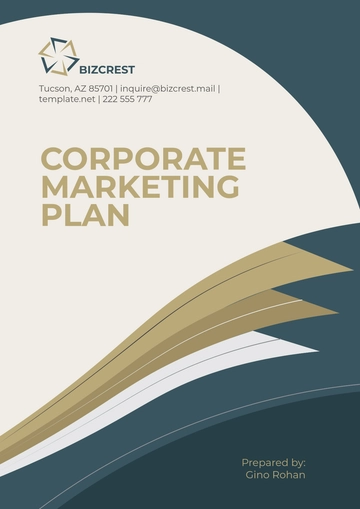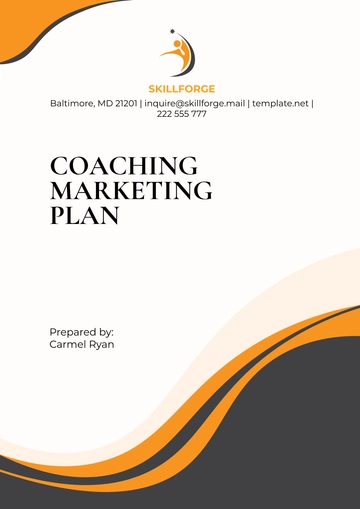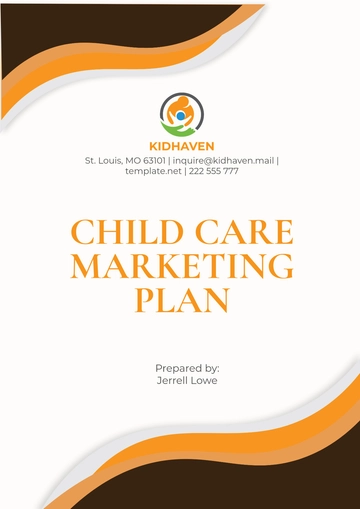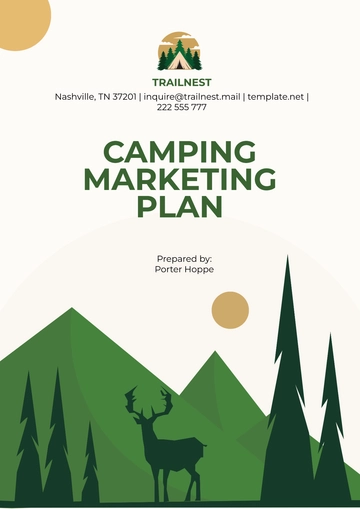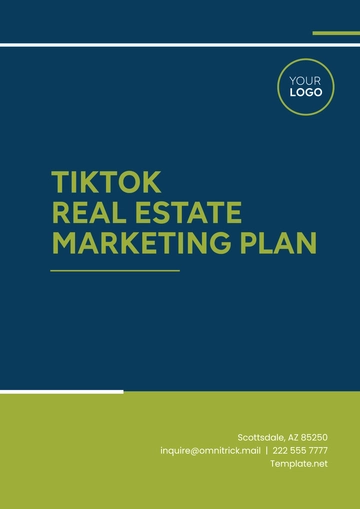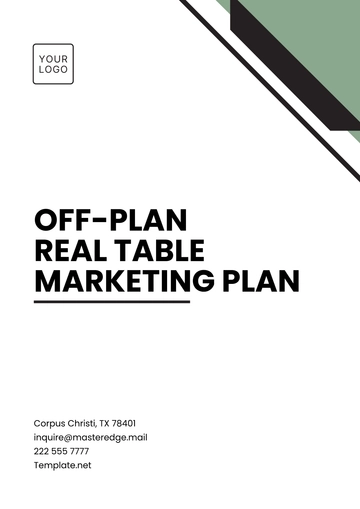Free Fashion Marketing Plan

Prepared by: [Your Name]
Date: [Date]
I. Executive Summary
This Fashion Marketing Plan outlines the strategic approaches and tactical initiatives for promoting and selling our innovative fashion products from 2050 to 2051. Our overarching goal is to significantly enhance brand awareness, increase overall sales, and expand our market share within the rapidly evolving fashion industry. This comprehensive plan delves into our target market demographics, a detailed competitive landscape analysis, clearly defined marketing objectives, innovative strategies, budget allocations, and established metrics for success.
II. Market Analysis
A. Industry Overview
The fashion industry continues to be a dynamic and rapidly evolving sector, driven by shifting consumer preferences, economic fluctuations, and transformative technological advancements. The global fashion market is anticipated to grow at a compound annual growth rate (CAGR) of 6.5% from 2050 to 2055 (Statista, 2050). This growth is largely attributed to increased demand for personalized fashion experiences and the integration of virtual reality in retail environments.
B. Consumer Trends
Recent consumer trends indicate a strong inclination towards sustainable and ethically produced fashion. As a result, brands that prioritize transparency in their supply chains are gaining traction. Furthermore, the rise of artificial intelligence in fashion design and e-commerce personalization is reshaping consumer purchasing behaviors, allowing for more tailored shopping experiences.
C. Market Segmentation
Demographic: Age (18-40), gender (all-inclusive), income level (middle to high)
Geographic: Urban centers, suburban areas, and emerging markets
Psychographic: Lifestyle choices (health-conscious, eco-friendly), values (social responsibility, individuality), personality traits (fashion-forward, trendsetters)
Behavioral: Buying habits (frequent online shoppers), brand loyalty (influenced by social media endorsements), responsiveness to sustainability initiatives
III. Competitive Analysis
A. Major Competitors
Competitor | Strengths | Weaknesses |
|---|---|---|
Competitor A | Strong online presence, extensive product range | High pricing, limited physical stores |
Competitor B | Affordable pricing, extensive retail network | Narrow product line, low brand equity |
Competitor C | Innovative use of technology in shopping | Slow adaptation to changing trends |
B. SWOT Analysis
Strengths: Unique designs that blend fashion with functionality, a strong brand identity anchored in sustainability, and advanced technological integration in products.
Weaknesses: Limited market reach due to high price points and the need for greater visibility in emerging markets.
Opportunities: Potential expansion into untapped international markets, increased online sales through enhanced digital marketing strategies, and collaborations with emerging designers.
Threats: Intense competitive pricing strategies from rivals, rapidly changing consumer preferences towards minimalism and sustainability, and economic downturns impacting consumer spending.
IV. Marketing Objectives
Increase brand awareness by 30% within the next year through targeted campaigns and influencer partnerships.
Boost online sales by 20% over the next six months by optimizing e-commerce platforms and enhancing user experience.
Expand market share in urban and emerging demographics by 15% through tailored marketing initiatives.
V. Target Market
Our primary target market comprises fashion-forward individuals aged 18-40, primarily residing in urban areas, with a middle to high income. These consumers prioritize quality, sustainability, and exclusivity, often following the latest fashion trends. Our secondary target market includes eco-conscious consumers who place a high value on sustainable, ethically produced fashion, including millennials and Gen Z.
VI. Marketing Strategies
A. Branding
We will enhance our brand identity through consistent messaging across all platforms, emphasizing our unique designs and commitment to sustainability. Collaborations with influential fashion bloggers, celebrities, and eco-activists will further bolster our brand credibility. We will also introduce a “Sustainability Badge” for products meeting stringent eco-friendly standards.
B. Pricing
Our pricing strategy will maintain a balance between affordability and the perceived value of our high-quality products. Seasonal discounts and loyalty programs will be implemented to retain existing customers and attract new ones. Additionally, we will offer a subscription service for exclusive member-only designs.
C. Distribution Channels
Online Store: We will invest in enhancing user experience by optimizing our mobile site and incorporating augmented reality features for virtual try-ons.
Retail Stores: Strategic opening of flagship stores in high-footfall areas and pop-up stores in emerging markets to create brand experiences.
Third-Party Retailers: Partnering with reputable retailers that share our values of sustainability and ethical practices.
D. Promotional Activities
Social Media Marketing: We will run targeted ad campaigns on Instagram, Facebook, and TikTok, leveraging user-generated content to build community engagement.
Email Marketing: Monthly newsletters featuring exclusive offers, fashion tips, and sustainability insights to keep our audience informed and engaged.
Public Relations: Regular press releases, sponsorship of fashion shows, and participation in sustainability forums to increase visibility and credibility.
VII. Budget
Activity | Budget Allocation ($) |
|---|---|
Social Media Marketing | 70,000 |
Email Marketing | 15,000 |
Public Relations | 40,000 |
Retail Expansion | 150,000 |
Online Store Improvements | 30,000 |
VIII. Metrics for Success
Monthly and quarterly sales reports to track revenue growth.
Website traffic and conversion rates were analyzed through Google Analytics.
Social media engagement metrics (likes, shares, comments) tracked across all platforms.
Customer feedback and reviews are collected through surveys and online platforms to gauge satisfaction.
IX. References
Statista. (2050). Fashion industry - Statistics & Facts. Retrieved from https://www.statista.com
- 100% Customizable, free editor
- Access 1 Million+ Templates, photo’s & graphics
- Download or share as a template
- Click and replace photos, graphics, text, backgrounds
- Resize, crop, AI write & more
- Access advanced editor
Boost your brand with the Fashion Marketing Plan Template from Template.net. This customizable and fully editable template helps you outline effective marketing strategies tailored to your goals. Create a winning plan quickly, with simple editing options available through our Ai Editor Tool, ensuring your fashion marketing efforts are always on point and up to date.

